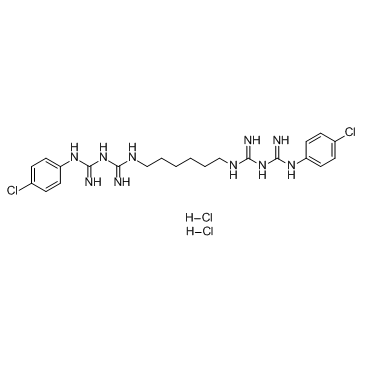| Structure | Name/CAS No. | Articles |
|---|---|---|
 |
Chlorhexidine
CAS:55-56-1 |
|
 |
Chlorhexidine Dihydrochloride
CAS:3697-42-5 |
|
 |
Chlorhexidine digluconate
CAS:18472-51-0 |